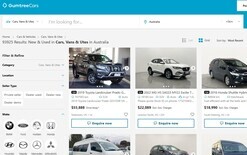New models shine in safety tests

Toyota’s new hydrogen-powered Mirai sedan and the latest Subaru Outback have both been awarded five-star safety ratings following extensive assessments by ANCAP.
The vehicles have been released into the New Zealand and Australian markets this year and secured their top rating after being tested against the 2020-2022 criteria.
Carla Hoorweg, ANCAP’s chief executive officer, says the Subaru Outback particularly impressed safety experts after achieving record scores across three of the four key assessment areas.
It notched 91 per cent for child occupant protection, 84 per cent for vulnerable road user protection, and 96 per cent for safety assist – outperforming its closest rival in this area by seven per cent.
The Outback also collected maximum points in the lane keep assist and emergency lane keeping test scenarios, and close to full points in the autonomous emergency braking (AEB) car-to-car scenarios.
Top marks were also awarded for its protection of pedestrians in upper and lower leg impacts, and for its ability to actively avoid forward collisions with pedestrians through autonomous braking.
ANCAP notes a driver monitoring system is fitted as standard to the Subaru model, making it one of the first production cars to directly monitor the driver’s state of alertness through eye movement, as well as indirectly monitoring through steering inputs.
The one low point for the Outback was with its AEB Backover system, which is designed to prevent reversing collisions with pedestrians. Performance in the safety test scenarios was poor with ANCAP encouraging functionality improvements in future updates.
Toyota’s Mirai recorded 80 per cent for vulnerable road user protection, the second highest score to date.
ANCAP says extra attention was paid to the crash and post-crash safety of the hydrogen-powered vehicle, with assessments revealing this fuel type had no effect on the Mirai’s inherent safety.
Hoorweg adds: “The results achieved by the Toyota Mirai are to be commended, showing safety and environmental benefits can and should go hand-in-hand.”
The Mirai has an active bonnet to provide improved protection for pedestrians and multi-collision braking designed to prevent secondary impacts also fitted as standard.
“The safety specification of vehicles entering the market today has clearly evolved to take into account not only the physical protection offered by a vehicle if it crashes, but also the ability to actively avoid a crash or serious outcome for those outside the vehicle,” says Hoorweg
“This balanced approach to passive and active safety that we’re seeing from manufacturers is very important as we move further towards assisted, and eventually automated driving.”





